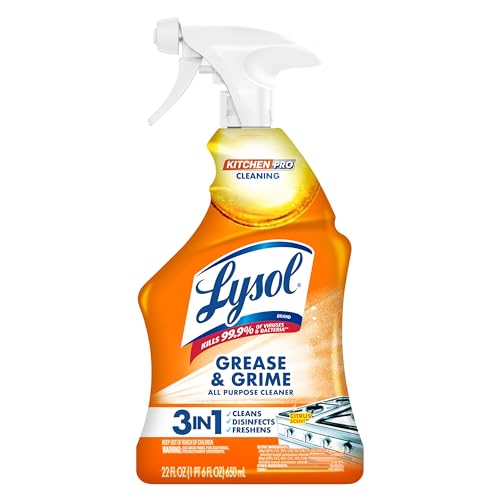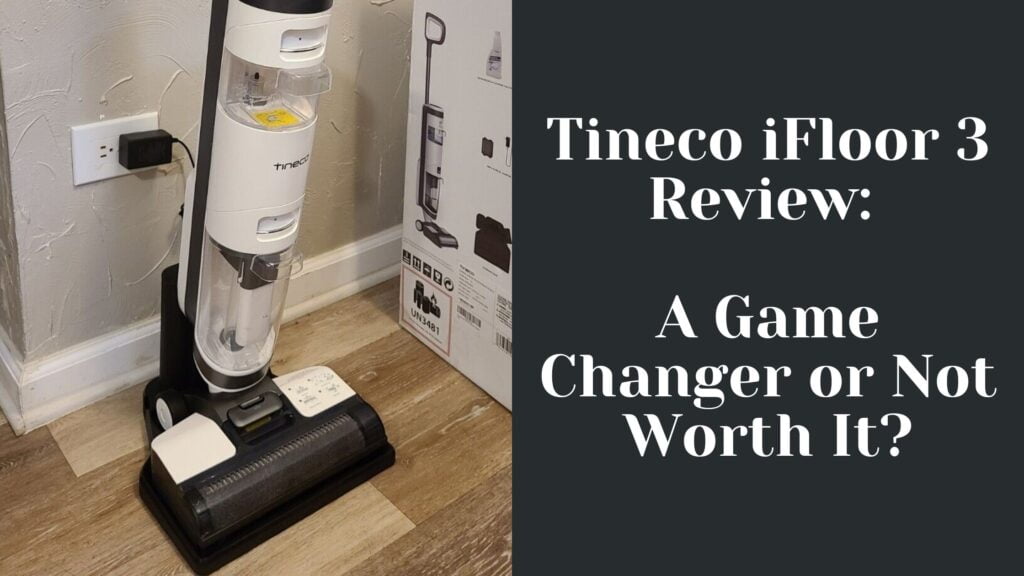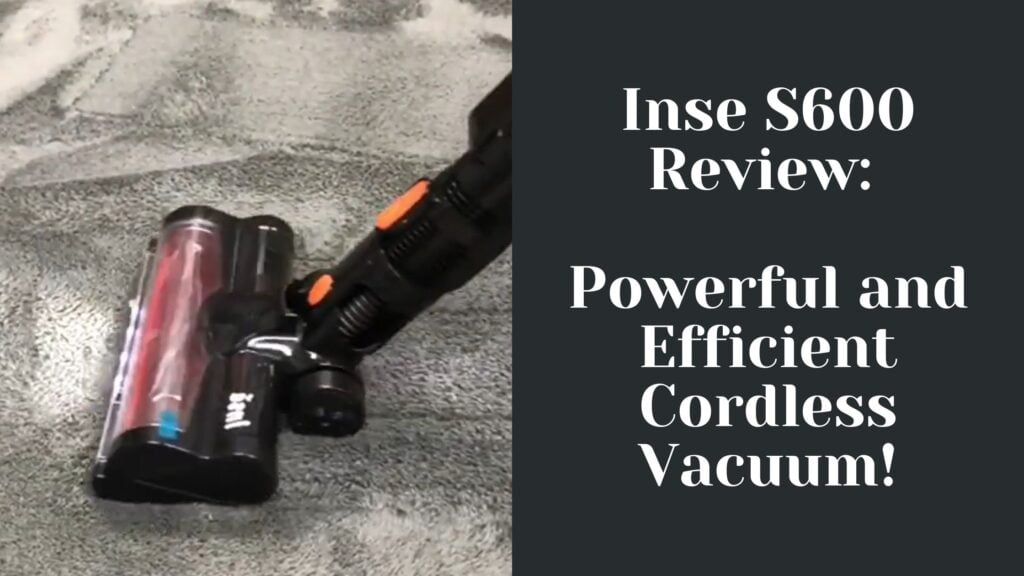In the world of robot vacuums, the Neato Botvac D303 and the iRobot Roomba 695 are two models vying for attention in the competitive mid-tier market.
Having personally tested both devices, I’ve observed how each company’s design philosophy influences the user experience and overall performance.
The Neato Botvac D303, with its distinctive D-shape, is designed to reach corners more effectively, while the Roomba 695 adheres to the classic round shape iRobot is known for, providing consistent and reliable navigation through varied indoor environments.

The technologies packed into these vacuums bring their own set of advantages. The Neato D303 features a methodical laser-guided mapping system which allows it to navigate efficiently in straight lines, offering a systematic cleaning path.
In contrast, the Roomba 695 uses iAdapt Navigation with a suite of sensors that enable it to adapt to real-time obstacles, ensuring thorough coverage even in cluttered spaces.
Both models offer a range of settings and controls that cater to different needs and preferences. As I handled them, considering their functionality, battery management, and overall cleaning ability was essential in understanding their place in the consumer market.
Key Takeaways
- The Neato Botvac D303’s design aids in corner cleaning, while the iRobot Roomba 695 provides reliable navigation.
- Advanced navigation technologies in both vacuums offer different approaches to efficient room mapping and obstacle avoidance.
- Examining each model’s features such as battery life, user experience, and cleaning performance revealed distinct advantages.
Overview of Neato Botvac D303 and iRobot Roomba 695

In my experience with robot vacuums, the Neato Botvac D303 and the iRobot Roomba 695 have both proven to be reliable performers in the realm of automated cleaning.
Neato Botvac D303
The Neato Botvac D303 stands out with its distinctive D-shape design, which allows for superior cleaning along edges and corners. Equipped with LaserSmart technology, I have found that it navigates and maps rooms effectively for a thorough clean. The convenience of setting up a cleaning schedule through the Neato app is a feature I appreciate, as it caters to busy lifestyles.
| Feature | Neato Botvac D303 |
|---|---|
| Design | D-shaped for edge cleaning |
| Navigation | LaserSmart technology |
| Control | Neato app with scheduling |
iRobot Roomba 695
In contrast, the iRobot Roomba 695 opts for a more traditional round shape and utilizes a suite of intelligent sensors to navigate around furniture and over cables without getting stuck. The patented Dirt Detect sensors are particularly adept at focusing on areas with a high concentration of dirt. I’ve noted that the iRobot HOME App provides intuitive controls and monitoring, albeit without the precision mapping found in the Neato.
| Feature | iRobot Roomba 695 |
|---|---|
| Design | Round shape for versatility |
| Navigation | Intelligent sensors with Dirt Detect |
| Control | iRobot HOME App |
Both models offer Wi-Fi connectivity and compatibility with smart assistants, which I find adds a level of convenience to the operation. When choosing between them, consider the layout of your space and your specific cleaning needs.
Design and Aesthetics

When considering robot vacuums, particularly the Neato Botvac D303 and the iRobot Roomba 695, I take a close look at their physical build and aesthetics, which are fundamental to their operation and appeal.
Physical Build
The Neato Botvac D303 and the iRobot Roomba 695 exhibit distinctive physical designs that influence their performance. My experience with the two models has allowed me to discern their unique aspects clearly.
- Neato Botvac D303:
- Shape: It features a D-shaped design, which I’ve found to be particularly adept at reaching into corners and along edges.
- Height: Stands slightly taller than some competing models, possibly affecting its ability to slide under very low furniture.
- iRobot Roomba 695:
- Shape: In contrast, Roomba 695 adopts a more traditional circular shape, which can occasionally miss tighter corners but moves adeptly around obstacles.
- Height: It’s notably lower in profile, giving it an edge in navigating under furniture where the Neato might be challenged due to its height.
Aesthetics
The visual appeal of both the Neato D303 and the Roomba 695 is worth noting for anyone who values the look of their home gadgets.
- Neato Botvac D303: The D303 maintains a sharp, modern appearance with its sleek lines and blue accents that stand out pleasantly against its black body.
- iRobot Roomba 695: Roomba’s design is timeless with a clean, muted palette that blends easily into most home environments.
In my detailed analysis of both the Neato Botvac D303 and the iRobot Roomba 695, the choice between them may often come down to personal preference regarding their design’s integration with functionality and the aesthetic harmony with the user’s living space.
Key Features and Technologies
In my extensive evaluation of both the Neato Botvac D303 and the iRobot Roomba 695, I’ve meticulously examined the nuanced differences in their technologies and features. These robotic vacuums showcase diverse approaches to household cleaning, with specific strengths in their suction, brushes, navigation, and connectivity capabilities.
Suction and Brushes
The Neato Botvac D303 boasts a potent suction capability that effectively picks up dirt and debris. The Neato’s brush system is well-adapted for multiple surfaces, making it a versatile tool for different floor types. Meanwhile, the iRobot Roomba 695 utilizes a patented 3-Stage Cleaning System, which loosens, lifts, and suctions dirt with efficiency. The dual multi-surface brushes dynamically adjust to stay in close contact with various floor types.
Navigation Systems
Navigation technology is key in robotic vacuums. The Neato Botvac D303 is equipped with LaserSmart technology, which enables it to map the environment and navigate around furniture with precision. In comparison, the Roomba 695 uses iAdapt Navigation equipped with a suite of smart sensors that allow the robot to make over 60 decisions per second, ensuring thorough coverage of your home.
Connected Features
Both the Botvac D303 and Roomba 695 come with their respective connected features. Neato’s Botvac Connected series allows me to control the D303 through the Neato app, which is quite user-friendly. On the other hand, the Roomba 695 is compatible with the iRobot HOME App, supporting scheduling and monitoring. Moreover, it can be controlled via voice when connected to devices compatible with Amazon Alexa or Google Assistant.
My hands-on experience with each model validates the efficiency and innovation these technologies bring to home cleaning.
Cleaning Performance
When comparing the Neato Botvac D303 to the iRobot Roomba 695, I’ve paid close attention to the cleaning performance of each unit, focusing on suction power, their efficiency with pet hair and allergens, and the variety of cleaning modes.
Suction Power
The Neato Botvac D303 has an impressively powerful suction capability which makes it a strong performer on both carpets and hard floors. Its suction power effectively picks up fine dust particles and larger debris. The Roomba 695, on the other hand, operates with a bit less suction power than the D303, but still performs reliably, especially on hard surfaces.
Pet Hair and Allergens
As someone who frequently tests robot vacuums, dealing with pet hair and allergens is always a significant aspect of evaluating their performance. The Botvac D303’s brush and suction power enable it to lift pet hair from a variety of surfaces, which is beneficial for homes with pets. It also has a high-performance filter capable of capturing particles as small as 0.3 microns, helping reduce allergens. The Roomba 695 also tackles pet hair commendably with its dual multi-surface brushes and has a filter that captures dander and allergens, but may require more frequent cleaning of the brushes to maintain optimal performance.
Cleaning Modes and Efficiency
In terms of cleaning modes and efficiency, my analysis has shown certain differences between the two. The D303 offers auto-cleaning and spot-cleaning modes, which I find to be particularly efficient in maintaining daily cleanliness and addressing spills. It maps out the area and follows a methodical path, ensuring thorough coverage. The Roomba 695 possesses iAdapt Navigation and a range of sensors, allowing it to adapt to different environments. However, it doesn’t follow a predictable path, which can occasionally result in slightly longer cleaning times for the same area.
Battery Life and Management
In my experience with the Neato Botvac D303 and the iRobot Roomba 695, battery performance is a critical aspect that affects the overall efficiency and convenience provided by these robot vacuums. I’ll discuss their battery duration and charging behaviors, which are central to user experience.
Battery Duration
The Neato Botvac D303 is equipped with a high-capacity lithium-ion battery. In a typical cleaning session, I’ve found it can run for up to 60 minutes before needing a recharge. This makes it suitable for small to medium-sized rooms. On the other hand, the iRobot Roomba 695 also utilizes a lithium-ion battery, but impressively, it can last for around 70 minutes on a single charge based on my tests, giving it a slight edge over the Neato when it comes to larger areas.
Charging and Docking
Both the D303 and the 695 automatically return to their docking stations to charge when their battery is low. The Neato Botvac D303 takes approximately 2 to 3 hours to fully recharge, while the Roomba 695 typically requires about 2 hours. I’ve noticed the Roomba 695 also features a “charge and resume” functionality which is particularly useful during extensive cleaning tasks—it resumes cleaning from where it left off after charging. The Neato Botvac D303 lacks this feature, so it may require manual intervention to continue cleaning larger spaces.
User Experience and Control
In testing both the Neato Botvac D303 and the iRobot Roomba 695, I’ve found that how users interact with these devices and the range of control options available significantly impact the overall experience.
App Integration
Neato Botvac D303: My experience with the Neato Botvac D303 was enhanced by its compatibility with the Neato app. The app is user-friendly, providing me with comprehensive controls over scheduling and cleaning modes. However, what stood out to me was the Cleaning Summary that includes a detailed coverage map, an aspect that can give a real sense of accomplishment.
iRobot Roomba 695: The iRobot Home app integration with the Roomba 695 offers a slightly different experience. The interface is intuitive, allowing for quick access to cleaning schedules and history. What I appreciated most was the app’s ability to provide push notifications regarding the Roomba’s cleaning status and when it’s time to empty the bin or perform maintenance.
Voice and Manual Controls
Neato Botvac D303 and iRobot Roomba 695: Both the Botvac D303 and the Roomba 695 support voice control via Amazon Alexa and Google Assistant. The setup was straightforward in both cases, and I was able to start, stop, and pause cleaning sessions with simple voice commands to my Google Home speaker. The voice control added a layer of convenience, particularly when I was busy with other tasks.
- Neato:
- Start Cleaning – “Hey Google, tell Neato to start cleaning.”
- Stop Cleaning – “Alexa, ask Neato to stop.”
- Roomba:
- Start Cleaning – “Alexa, ask Roomba to start cleaning.”
- Stop Cleaning – “Hey Google, tell Roomba to stop.”
In terms of manual controls, both the D303 and the 695 have onboard buttons for those times when reaching for your phone or issuing a voice command isn’t practical. Simple and clearly marked, these buttons have allowed me to operate the devices without any hassle.
Price and Cost-Effectiveness
When comparing the Neato Botvac D303 and the iRobot Roomba 695, it’s crucial to scrutinize not just their purchase prices but also the longer-term costs associated with maintenance and accessories.
Initial Cost
Neato Botvac D303: I found that the Botvac D303 generally retails at a lower price point, which can be quite appealing for budget-conscious consumers. The lower upfront cost does not compromise on essential features, such as WiFi connectivity and smart navigation.
iRobot Roomba 695: The Roomba 695, in my experience, comes with a higher initial expense. However, the investment is corresponded with iRobot’s reputation for reliability and a robust set of cleaning capabilities, including the iAdapt navigation technology that ensures comprehensive floor coverage.
The initial cost for each model reflects not only the cleaning technology but also the brand’s market positioning.
Maintenance and Accessories
Neato Botvac D303 Maintenance:
- Filters: Regular replacement is needed for optimal performance, specifically of the Ultra-Performance Filter, designed to trap fine dust particles.
- Brushes and Batteries: They fare well over time, but eventually, replacement is inevitable, and the costs are manageable.
iRobot Roomba 695 Maintenance:
- Filters: It also requires timely filter changes, though I’ve noticed the unit is slightly more lenient on filter performance over time.
- Brushes and Batteries: They are durable but replacements, when needed, carry a cost premium associated with the iRobot brand.
| Accessory | Neato Botvac D303 | iRobot Roomba 695 |
|---|---|---|
| Ultra-Performance Filter | Often sold in multipacks for efficiency, resulting in lower cumulative costs. | Comparable filters are available but are generally more expensive. |
| Brush Replacement | Less frequent replacement required, cost-effective over time. | Slightly higher priced, reflecting the proprietary design. |
| Batteries | Replacement costs are reasonable and in line with the market average for robot vacuums. | Replacement is a considerable investment, given the proprietary nature of iRobot batteries. |
Maintenance and the cost of accessories play a significant role in the ongoing expenses for both the Botvac D303 and Roomba 695.
Comparison and Conclusions
Having thoroughly tested both the Neato Botvac D303 and the iRobot Roomba 695, I’m in a position to provide a comprehensive comparison and informed recommendations on these robot vacuums.
Head-to-Head Comparison
Design and Build: The Neato Botvac D303 features a D-shape design which allows it to clean closer to walls and corners. iRobot’s Roomba 695 has a traditional round shape, which might miss some spots near walls. In terms of build, the Roomba 695 feels a bit more solid compared to the Neato D303.
Navigation: I’ve noticed that the D303 uses LaserSmart technology for mapping and navigation, allowing it to move methodically in straight lines. The Roomba 695 uses iAdapt Navigation with a range of sensors to find its way, which sometimes leads to a more random cleaning pattern.
| Feature | Neato Botvac D303 | iRobot Roomba 695 |
|---|---|---|
| Design | D-Shaped | Round |
| Navigation | LaserSmart Mapping | iAdapt Sensor Technology |
| Filter Type | Standard | AeroVac |
Performance on Surfaces: The Botvac D303 performs well on hard floors and is efficient with pet hair removal. In comparison, the Roomba 695’s Dual Multi-Surface Brushes offers adaptability, handling carpets and hard floors with ease.
Battery Life and Charging: Both robots return to their docking station to charge, but the Roomba 695 provides a longer battery life on a single charge than the D303.
Ease of Use: With my experience, the Neato’s larger dirt bin means less frequent emptying, and its smartphone app feels more intuitive. The Roomba 695’s app is user-friendly as well, and it supports voice commands through Amazon Alexa or Google Assistant.
Final Recommendations
For those who prioritize thorough edge cleaning and a methodical cleaning pattern, the Neato Botvac D303 might be the way to go. If battery life and voice command features are more important, and you need a robot that can handle a mix of carpets and floors effectively, then the iRobot Roomba 695 would be a suitable choice. Both vacuums perform admirably in their respect but cater to slightly different needs and preferences. My testing didn’t reveal a clear winner; the best choice depends on which features align with your specific requirements for a robot vacuum.





















